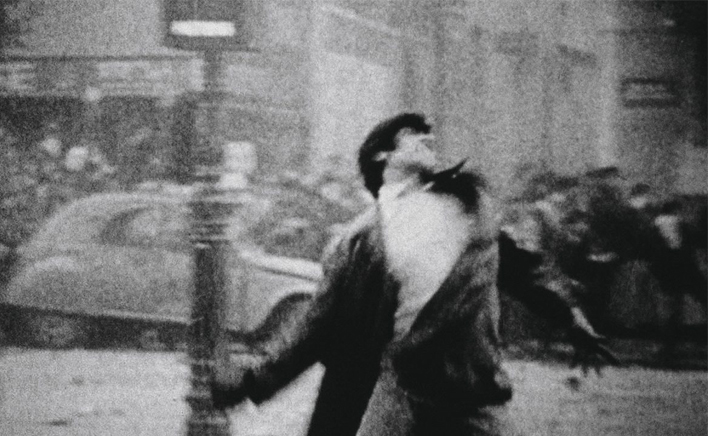
The ways we inhabit and think space in contemporary politics are inevitably politics.Today it's an evidence what some architectonic characteristics of some space can easily turn its atmosphere more or less oppressive, pleasurable or just functional. So space and power become inextricable, even if we're talking about an intimal space as it is Villa Além, house projected by the Swiss architect Valerio Olgiati and his wife, Tamara, in Alentejo. Constructed by several hands, from three architects and a filmmaker, "The Construction of Villa Além" portraits the building of that same project establishing a dialog between the forms of cinema and architecture. The film will be screened only once, on March 21, and will be presented by the directors Ana Resende, Miguel C. Tavares, Rui Manuel Vieira and Tiago Costa.
Nothing but editing could be the architecture of a film. From this idea, the Brazilian director João Moreira Salles crated "In The Intense Now", film that gets together archival footage of the 60s from different latitudes – such as 68 May, Prague Spring or the Chinese cultural revolution. That's a political document that portraits a fulminant period of the XX century, juxtaposes in an innovative way images and events creating new senses while embodying what shall be called urgent cinema. The screening of "In The Intense Now", on March 22, marks the beginning of the program 6.doc in Porto, a partnership with the festival Doclisboa.
Program #02.2018
10:00 p.m., Cinema Passos Manuel
March 21
The Construction of Villa Além, by Ana Resende, Miguel C. Tavares, Rui M. Vieira, Tiago Costa
2017, PT, 55', M6
"The Construction of Villa Além" follows the construction of the house that the Swiss architect Valerio Olgiati and his wife, Tamara, dreamed to live in part of the year, in a remote place of the south of Portugal.
March 22
In The Intense Now, by João Moreira Salles
2017, BR, 127’, M12
Within the program 6.doc (partnership with Doclisboa)
Scenes shot in China in 1966 during the most radical stage of the Cultural Revolution are set alongside archival images of the events of 1968 in France, Czechoslovakia, and Brazil. What can one say of Paris, Prague, Rio de Janeiro, or Beijing by looking at these images?